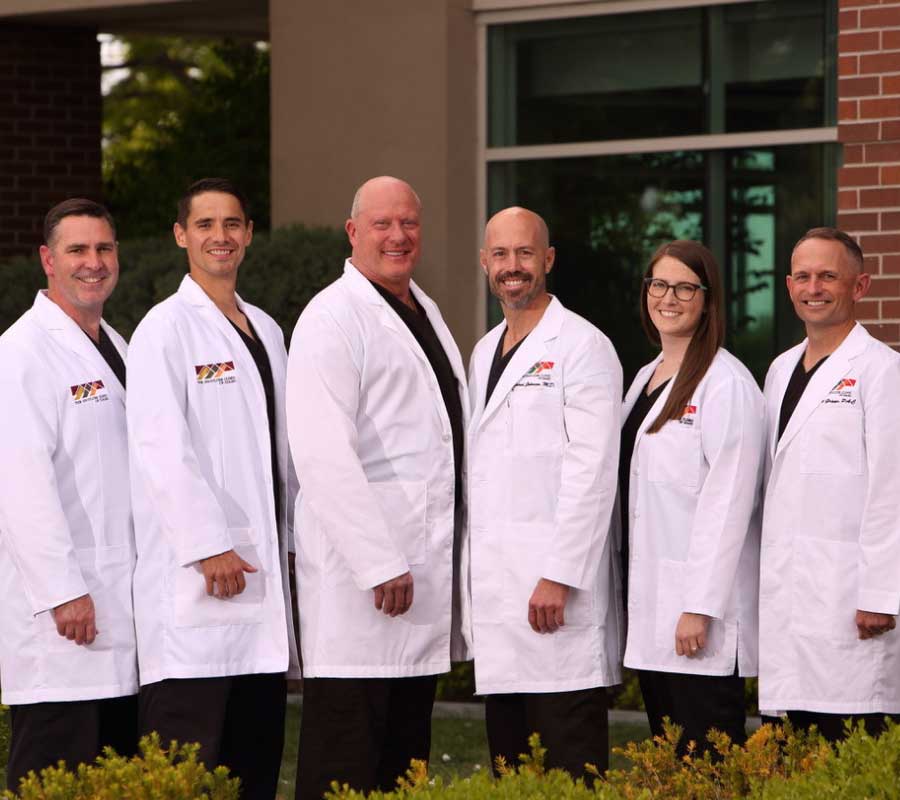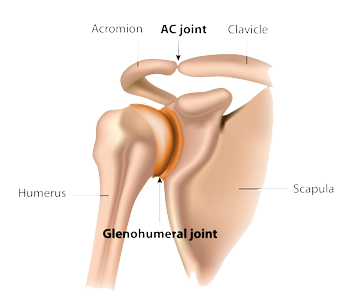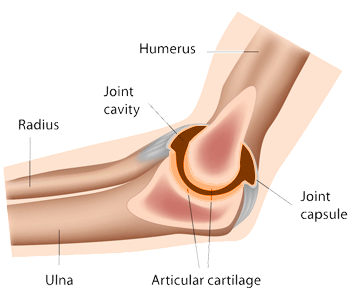Shoulder Separation Specialists

Are you an athlete who participates in contact sports? If so, you may be at risk of separating your shoulder. A separated shoulder is typically caused by blunt trauma to the shoulder or by a fall onto the shoulder. The shoulder separation specialists at the Shoulder Clinic of Idaho provide diagnosis and both surgical and nonsurgical treatment options for patients in the Boise area who have suffered a shoulder separation. Contact the Shoulder Clinic of Idaho team today!
What is an AC Joint Injury?
There are three joints that make up the shoulder – the glenohumeral joint, the acromioclavicular joint and the sternoclavicular joint. When there is a shoulder separation, it usually refers to the area of the shoulder called the acromioclavicular joint (also known as the “AC” joint). An acromioclavicular joint (AC joint) injury occurs at the junction between the highest point of the shoulder (acromion) and the collarbone (clavicle.) During a shoulder separation, the ligaments connecting the acromion and the clavicle (AC joint) are injured and the acromion moves away from the clavicle. In a mild shoulder separation, the ligaments may be stretched. In severe injuries the ligaments may be torn. AC joint injuries are common and are usually caused by direct trauma to the shoulder, such as a hard fall or blunt force, experienced during sports. One of the more common mechanisms resulting in this type of injury is a from a fall from a bicycle or mountain bike. AC joint injuries are also common in football when the tackled player lands on the point of his shoulder driving the acromion away from the clavicle tearing the ac joint ligaments. The orthopedic specialists at The Shoulder Clinic of Idaho can help patients living in Boise, Meridian, Nampa, and the surrounding communities of the Treasure Valley remain active after experiencing an AC shoulder joint injury.
How is a shoulder separation different from a shoulder dislocation?
A shoulder separation is completely different from a shoulder dislocation. During a shoulder dislocation, the arm bone (humerus) is displaced from the shoulder socket (glenoid.) Dislocations often need to be reduced (put back into place) and are often accompanied by torn ligaments and cartilage within the ball and socket (glenohumeral) joint. A shoulder separation occurs at the top of the shoulder at the AC joint.
The capsule of the AC joint as well as two additional ligaments that help suspend the arm to the clavicle commonly tear in shoulder separations. The two ligaments that help suspend the arm are called the coracoclavicular ligaments – also known as the CC ligaments. These ligaments are called the coracoclavicular ligaments because they attach the coracoid process a bony prominence on the shoulder blade (scapula) to the undersurface of the collar bone (clavicle). If the coracoclavicular (CC) ligaments are torn they commonly require reconstruction. The evaluation and treatment of a shoulder dislocation and a shoulder separation are different, and patients seeking the best outcome should be evaluated by the orthopedic specialists at The Shoulder Clinic of Idaho.
How are AC joint injuries classified?
AC joint injuries are classified based on the severity of the injury to the ligaments and capsule surrounding the AC joint. An AC joint injury is measured in multiple grades, Grade 1 through Grade 6.
- Grade 1: Mild shoulder pain with no shoulder deformity because the CC ligaments and AC capsule remain intact.
- Grade 2: A more serious injury which tears the AC ligaments and capsule and sprains or slightly tears the CC ligaments (coracoclavicular ligaments – ligaments which connect the clavicle to the coracoid process of the scapula). It causes the AC joint to be out of alignment, and predisposes the AC joint to AC arthritis.
- Grade 3: A more severe shoulder separation which completely tears both the AC and CC ligaments and moves the AC joint out of position.
- Grades 4, 5 and 6: Are more severe injuries representing a complete disruption of the all the AC and CC ligaments. Shoulder separations this severe require an evaluation by a shoulder specialist and typically require reconstructive shoulder surgery.
What are the Symptoms of a Separated Shoulder?
- Intense pain as soon as the injury occurs
- Joint pain ranging from mild tenderness to intense, sharp pain felt primarily on the top of the shoulder
- Swelling and bruising
- Weakness
- Visible deformity, often seen at the top of the shoulder
How is an AC Joint Injury Diagnosed?
When an AC separation is suspected, the orthopedic specialists at The Shoulder Clinic of Idaho will perform a thorough physical exam of the shoulder, checking for weakness and areas of discomfort. An obvious physical deformity may help determine the grade of separation and often an x-ray is requested to assess the severity of the diagnosis and can help develop the best treatment plan.
How is a Separated Shoulder treated?
Non-surgical Treatment:
The lower grade AC joint injuries are commonly treated with a non-surgical approach. Immobilizing the joint by using a sling or other type of brace, ice, rest and medication, can help minimize pain and aid in healing. Non-surgical treatment is recommended for low grade injuries and patients are often able to return to their normal activities in 1-6 weeks. Pain, however, can persist for many months after an AC joint injury – even with the lower grade AC joint separations where the ligaments are only stretched and not completely torn.
Surgical Treatment Alternatives:
Higher grade shoulder separations may require surgery. The Shoulder Clinic of Idaho offers patients in Boise, Meridian, Nampa, and the surrounding communities of the Treasure Valley a minimally invasive procedure called AC joint reconstruction. During this procedure, the experienced orthopedic shoulder specialist will use special surgical instruments to operate around the AC joint reconstructing and repairing the torn ligaments and capsule. The AC joint is not only stabilized by repairing and tightening the damaged ligaments, but in certain occasions, the surgery may require a ligament graft to restore stability. Afterward, a specialized physical therapy program is required to regain strength and full motion of the AC joint.
If you have questions regarding AC Joint Injuries, shoulder separations or other shoulder conditions, please contact The Shoulder Clinic of Idaho, serving patients in Boise, Meridian, Nampa, and the surrounding communities of the Treasure Valley.



